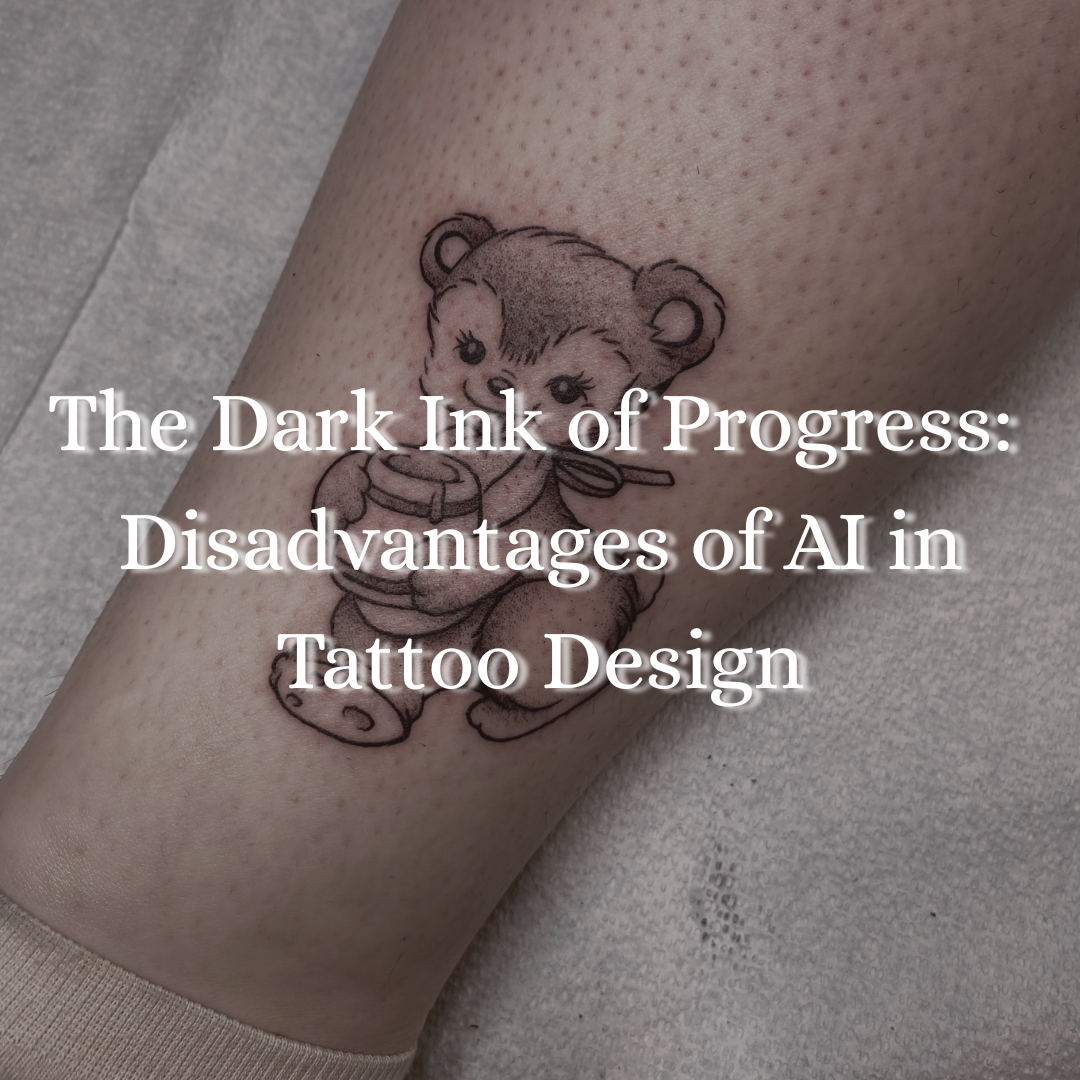The Disadvantages of AI in Tattoo Design
As artificial intelligence continues to infiltrate creative industries, tattoo design hasn’t been immune. AI-generated tattoos are on the rise, promising instant designs, endless iterations, and stylistic innovation. While this might sound like a dream for tattoo enthusiasts and artists alike, the integration of AI into tattoo design isn’t without its drawbacks. In fact, it raises important concerns about authenticity, originality, and the human touch that defines this ancient art form. Here’s a closer look at the disadvantages of AI in tattoo design:
1. Loss of Human Connection
Tattooing is more than just putting ink on skin—it’s a deeply personal and often emotional process. Many tattoos are rooted in memories, loss, or major life changes. A human artist can empathize, listen, and collaborate with clients to bring those stories to life in a meaningful way. AI, no matter how advanced, lacks emotional intelligence. It can generate designs, but it can’t connect to the personal significance behind them.
2. Lack of True Originality
AI models create designs by learning from existing tattoos, art, and imagery. This means that many AI-generated tattoos are essentially mashups or reinterpretations of what already exists. While this can produce visually impressive results, it raises ethical concerns about originality. Is the design really yours if it’s based on hundreds of other people’s work? For artists who pride themselves on creating one-of-a-kind pieces, AI can feel like a shortcut that undermines creativity.
3. Intellectual Property Concerns
Most AI tools are trained on vast datasets, often scraped from the internet without explicit permission from original artists. This can lead to the unintentional replication of copyrighted or stylistically unique work. Tattoo artists may find AI designs suspiciously similar to their own portfolio, which not only disrespects their effort but can also create legal gray areas for both clients and artists.
4. Aesthetic Without Function
AI designs are not always created with the technical constraints of tattooing in mind. A design that looks great on a screen might not translate well to skin. Factors like skin texture, placement on the body, aging, and ink diffusion over time are critical considerations that seasoned artists build into their work. AI lacks this real-world experience, which can lead to impractical or unsustainable designs.
5. Commodification of Tattoo Culture
AI has the potential to turn tattoo design into a fast, mass-produced commodity. This shift can cheapen the cultural and artistic value of tattoos, reducing them to trendy, disposable visuals rather than deeply personal symbols or meaningful artwork. For cultures and communities that view tattooing as a sacred or significant practice, the rise of AI-generated tattoos could be seen as a dilution of tradition.
6. Erosion of Artist Livelihoods
If clients increasingly turn to AI for quick, cheap designs, independent tattoo artists may find themselves undercut by algorithms. While AI can never replace the human hand that actually tattoos the design, the devaluation of design services may impact the overall sustainability of the profession—especially for up-and-coming artists trying to establish themselves.
Final Thoughts
There’s no denying that AI has impressive capabilities, and it can be a useful tool for brainstorming or experimenting with visual styles. But in the world of tattooing—where individuality, connection, and tradition are paramount—it’s vital to tread carefully. Tattooing isn’t just about images; it’s about identity, storytelling, and human expression. And those are things that no algorithm can truly replicate.
If you’re considering a tattoo, don’t just think about the design—think about the process, the artist, and the experience. Because when it comes to body art, the journey is just as important as the ink.
Author’s Note: While AI has a place in the evolving landscape of art and design, it should be seen as a tool—not a replacement. Tattooing is, at its heart, a profoundly human art. Let’s keep it that way.
Want to explore some of our other articles? Click here to go to our blog!
Follow us on Instagram (@tattoosbycesarperez) and Facebook (/TattoosByCesargiovanny)

